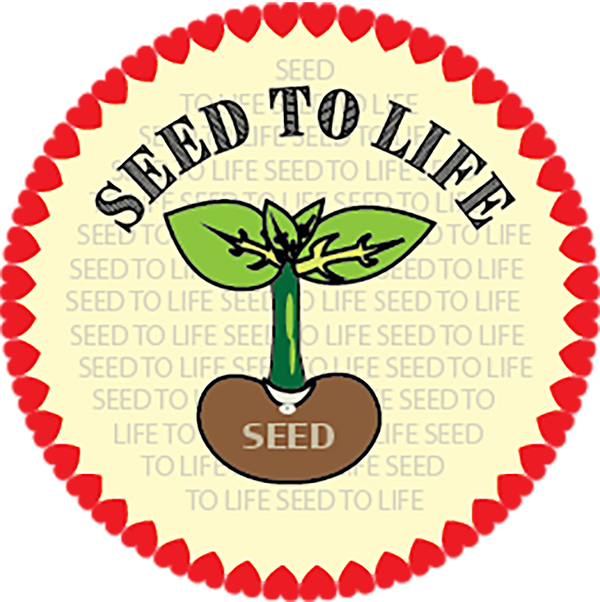
Autumn's Bounty: The Best Vegetables to Grow for a Thriving Fall Garden
Share
As the vibrant hues of summer begin to fade, many gardeners might think their growing season is drawing to a close. But fear not, fellow plant enthusiasts! Fall actually offers a second chance at a bountiful harvest, often with fewer pests and a more forgiving climate. Growing vegetables in autumn can be incredibly rewarding, extending your fresh produce supply well into the cooler months. This comprehensive guide will walk you through everything you need to know about cultivating a successful fall vegetable garden. We’ll cover the best cool-season crops, essential techniques, and expert tips to ensure your garden thrives even as the leaves turn golden. Get ready to discover the incredible potential of fall gardening and enjoy delicious, homegrown vegetables long after summer has passed.
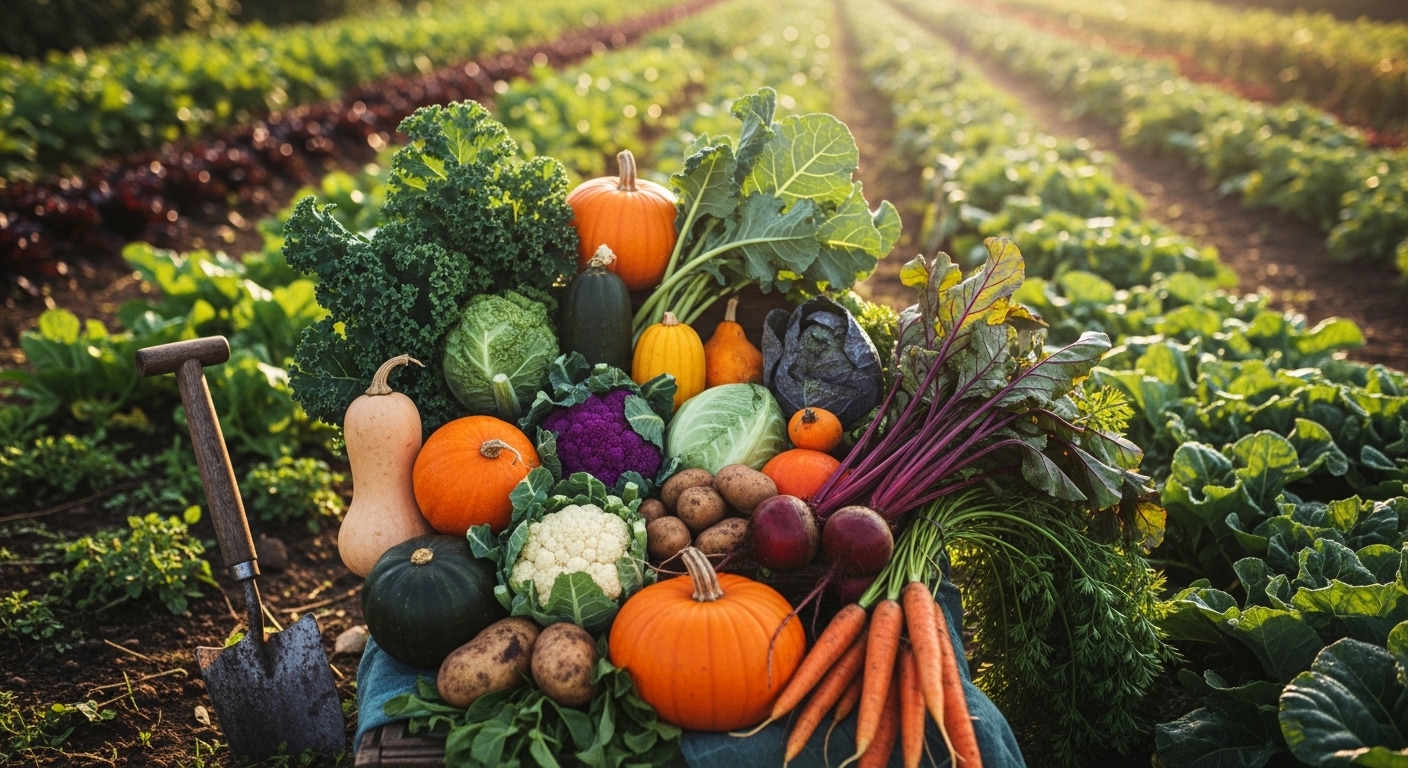
Why Embrace Fall Gardening? The Unique Advantages
Fall gardening isn't just an extension of summer; it offers a distinct set of advantages that can make it even more enjoyable and productive. The cooler temperatures are a welcome relief for both gardeners and plants, often leading to sweeter, more flavorful produce.
One major benefit is the reduced pest pressure. Many common garden pests, like aphids and tomato hornworms, become less active or die off as temperatures drop. This means less time spent battling invaders and more time enjoying your plants. The cooler soil also discourages many soil-borne diseases that thrive in summer heat, contributing to healthier plants overall.
Another significant advantage is the milder weather. The intense heat of summer can be stressful for many vegetable varieties, causing them to bolt (go to seed prematurely) or produce bitter flavors. Fall's gentle warmth and cool nights create ideal growing conditions for a wide range of crops, leading to robust growth and better yields. You'll find that leafy greens are crisper and root vegetables are sweeter when grown in these conditions.
Furthermore, fall gardening allows for better water retention in the soil. Less evaporation means you won't need to water as frequently, conserving water and reducing your workload. The slower growth rate in some crops during cooler weather can also enhance flavor, as plants have more time to develop complex sugars. Embracing fall gardening means extending your harvest and enjoying fresh, homegrown food for a longer portion of the year. It's an opportunity to discover new favorites and refine your gardening skills in a more relaxed environment.
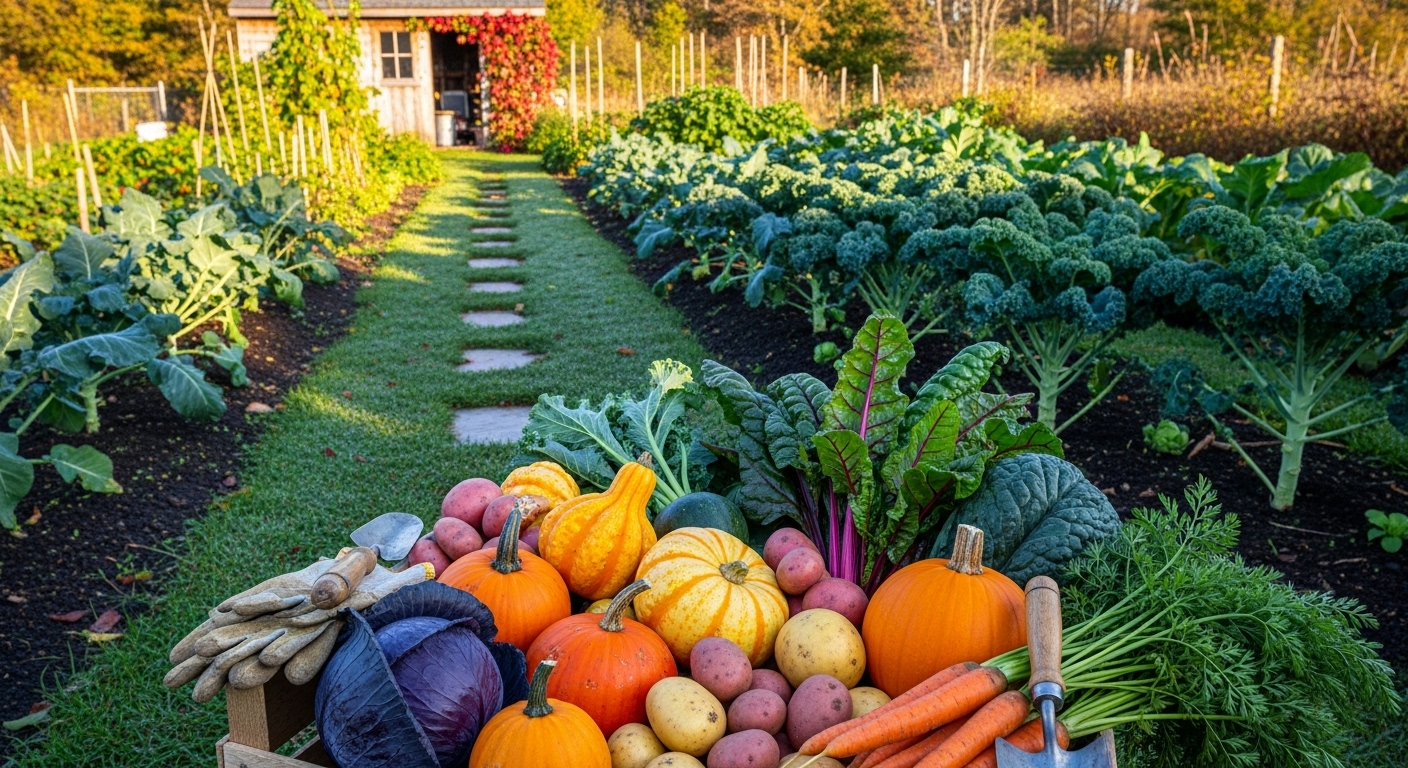
Top Root Vegetables for a Robust Fall Harvest
Root vegetables are true champions of the fall garden, thriving in the cool soil and often becoming sweeter with a touch of frost. Their ability to store well also makes them perfect for enjoying fresh produce long after harvest.
Carrots are a fantastic choice for fall. Varieties like 'Danvers Half Long' or 'Nantes' are excellent. Plant seeds directly into well-drained, loose soil, ensuring they are free of rocks, which can cause misshapen roots. Aim for planting about 10-12 weeks before your first anticipated hard frost. Keep the soil consistently moist for good germination. Carrots can even be left in the ground with a thick layer of mulch to harvest through early winter in many regions, enhancing their sweetness.
Beets are another cool-season favorite, providing both delicious roots and edible greens. 'Detroit Dark Red' and 'Bull's Blood' are popular choices. Sow seeds about 8-10 weeks before the first hard frost. Beets prefer full sun and fertile, well-drained soil. Thin seedlings to 3-4 inches apart to allow the roots ample space to develop. The greens are excellent steamed or sautéed, offering a versatile harvest from a single plant. Like carrots, a light frost can significantly improve their flavor.
Radishes are the quick-growing superstars of the fall garden. Varieties like 'Cherry Belle' or 'French Breakfast' can be ready in as little as 3-4 weeks. Sow seeds every 1-2 weeks for a continuous harvest. Radishes need consistent moisture to develop properly and prevent them from becoming woody or overly spicy. They are perfect for tucking into small spaces or between slower-growing crops. Their rapid growth makes them an ideal choice for impatient gardeners or those looking to fill gaps in their planting schedule.
Turnips offer a dual harvest of roots and greens. 'Purple Top White Globe' is a reliable variety. Plant seeds 6-8 weeks before the first frost. Turnips prefer cool weather and consistent moisture. Harvest the roots when they are 2-3 inches in diameter for the best flavor and texture. The greens are also very nutritious and can be harvested judiciously throughout the growing season. A light frost will sweeten the roots, making them a delicious addition to stews and roasts.
Potatoes are a surprising fall contender, especially in areas with mild winters. Second-cropping potatoes can be planted in mid-to-late summer for a fall harvest. Choose early-maturing varieties and ensure they have enough time to size up before deep freezes. Provide ample water, especially during tuber formation. Harvesting can continue until the ground freezes solid, giving you fresh spuds for months.
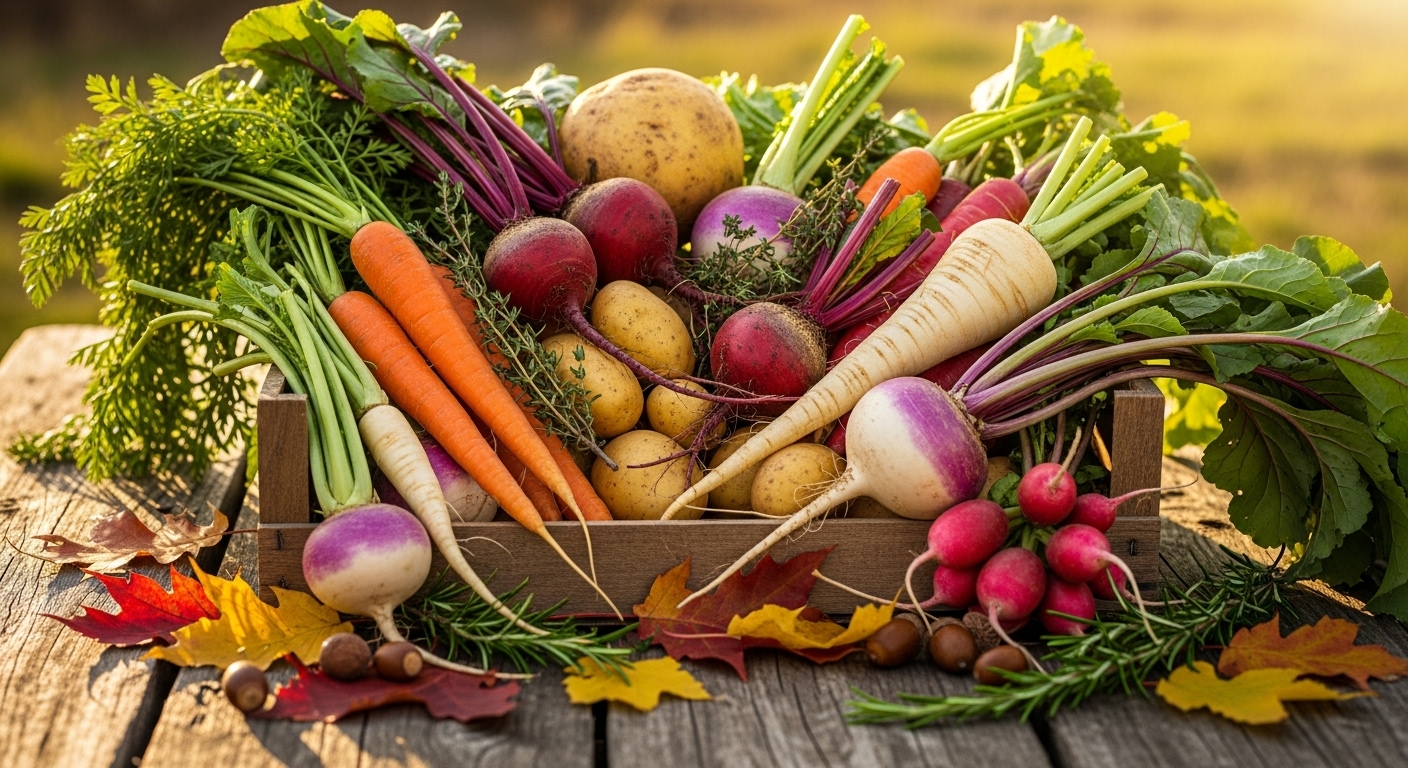
Leafy Greens and Brassicas: Fall's Green Gold
Leafy greens thrive in the cooler temperatures of autumn, often growing larger and tasting sweeter than their summer counterparts. The same applies to many members of the brassica family, which includes some of our most beloved cool-season vegetables.
Spinach is a quintessential fall crop. Varieties like 'Bloomsdale Long Standing' or 'Tyee' are excellent for autumn planting. Sow seeds directly into rich, well-drained soil, ensuring consistent moisture for germination. Spinach grows rapidly in cool weather and can be harvested as baby leaves or allowed to mature. A light frost can even enhance its sweetness. It's perfect for salads, smoothies, or quick cooking.
Kale is incredibly cold-hardy and tastes even better after a frost. 'Lacinato' (Dinosaur kale) and 'Red Russian' are popular choices. Plant kale seeds or starts about 8-10 weeks before the first hard frost. Kale prefers full sun and fertile soil. You can harvest individual leaves from the bottom up, allowing the plant to continue producing throughout the fall and often into winter. Its robust nature makes it a reliable staple for healthy eating.
Lettuce, particularly romaine and loose-leaf varieties like 'Black Seeded Simpson', are ideal for fall. Plant seeds or starts about 6-8 weeks before the first frost. Provide partial shade in warmer fall areas to prevent bolting. Consistent moisture is key for tender, non-bitter leaves. Succession planting every two weeks will ensure a continuous supply of fresh greens for your salads. The cooler temperatures also mean a longer harvest window before plants go to seed.
Swiss Chard is a beautiful and productive leafy green that tolerates both heat and cold well. Varieties like 'Bright Lights' offer stunning colorful stems. Sow seeds 8-10 weeks before the first hard frost. Chard is a cut-and-come-again crop, meaning you can harvest outer leaves regularly, and the plant will continue to produce. It's incredibly versatile in the kitchen, offering a milder flavor than kale but with similar nutritional benefits.
For the Brassica family, think Broccoli and Cabbage. For fall broccoli, choose varieties like 'Waltham 29' or 'Di Cicco'. Plant starts 10-12 weeks before the first hard frost. Broccoli needs consistent moisture and rich soil to produce large heads. After harvesting the main head, smaller side shoots will often develop, extending your harvest. Cabbage, especially cold-hardy varieties like 'Early Jersey Wakefield' or 'Danish Ballhead', thrives in fall. Plant starts 8-10 weeks before frost. Ensure adequate spacing and consistent watering for large, firm heads. Both broccoli and cabbage become sweeter and more tender when touched by cool autumn temperatures, making them a highlight of the fall garden.
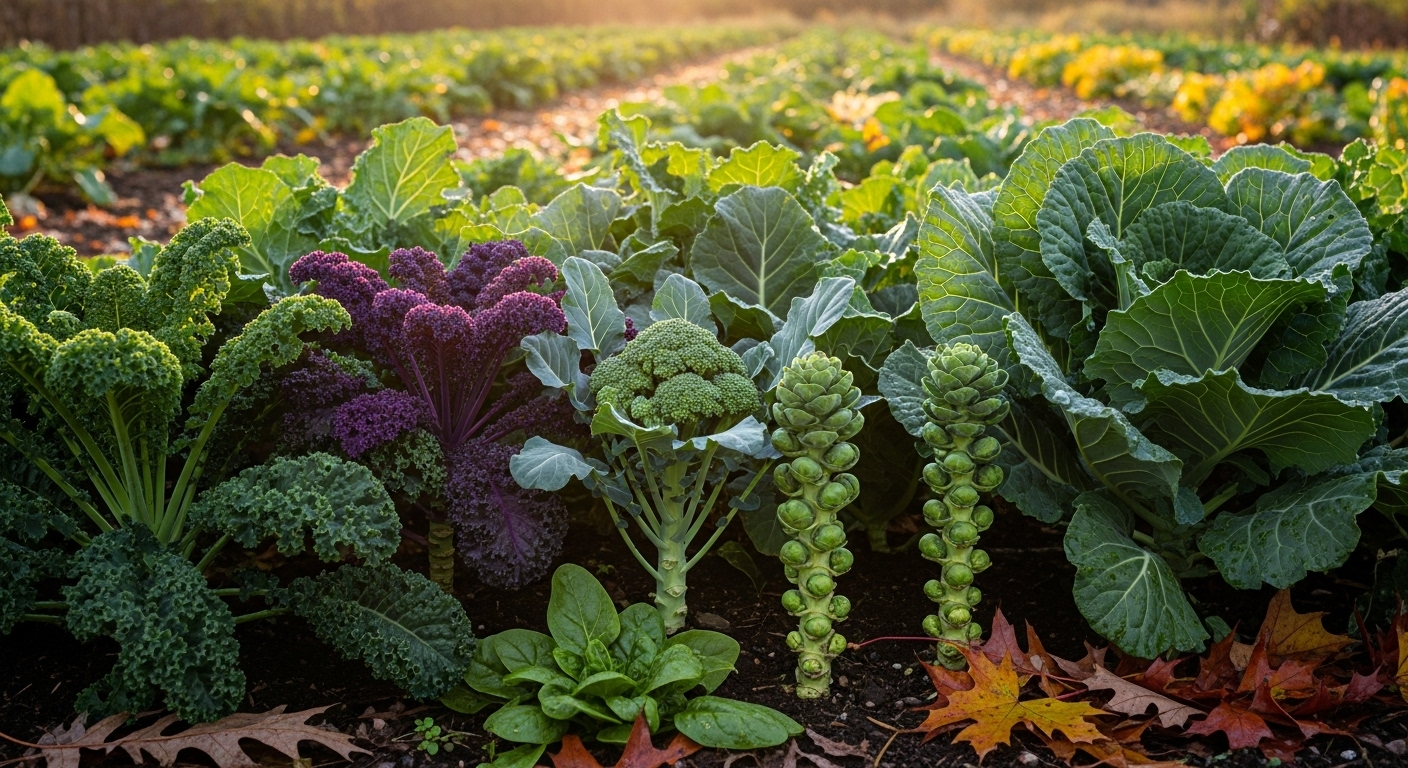
Essential Techniques for Fall Gardening Success
Mastering a few key techniques can significantly boost your success in fall gardening, ensuring a bountiful harvest even as the weather turns colder. These strategies focus on timing, protection, and smart resource management.
Timing is everything when planting for fall. The general rule is to count back from your average first frost date. Look up your local frost dates to accurately plan. Most cool-season crops need 6-12 weeks from seed to maturity before a hard freeze. For example, if your first frost is November 1st, and carrots take 70 days (10 weeks) to mature, you'd want to plant them by late August to mid-September. Planting too late means crops won't have enough time to mature, while planting too early might expose them to lingering summer heat.
Soil preparation remains crucial. Even for a fall garden, enrich your soil with plenty of compost or well-rotted manure. Good drainage is vital, especially as fall rains can increase. If planting in beds that previously housed summer crops, consider adding a fresh layer of compost to replenish nutrients. Healthy soil leads to healthy plants, which are more resilient to temperature changes.
Watering needs can change in fall. While evaporation decreases, consistent moisture is still important, especially during germination and establishment. As temperatures drop, you may need to water less frequently than in summer, but always check the soil moisture levels. Aim for deep, infrequent watering to encourage strong root development. Overwatering in cool, damp conditions can lead to fungal issues.
Succession planting is a game-changer for a continuous harvest. Instead of planting all your fall greens at once, sow small batches every 1-2 weeks. This ensures you have fresh produce maturing steadily rather than a huge flush all at once, followed by nothing. This is particularly effective for fast-growing crops like lettuce, radishes, and spinach.
Frost protection becomes essential as winter approaches. Even hardy fall crops benefit from protection against hard freezes. Simple methods include:
- Row covers: Lightweight fabric covers that can raise the temperature by several degrees and protect against light frost. They also deter pests.
- Cold frames: Miniature greenhouses that provide excellent insulation for cold-hardy plants, extending the season significantly.
- Cloches: Bell-shaped covers, often made of glass or plastic, used to protect individual plants.
- Mulch: A thick layer of straw, leaves, or wood chips around plants can insulate the soil and roots, helping to keep the ground from freezing solid and allowing for longer harvesting of root vegetables.
Pest and disease management in fall is often easier but still requires vigilance. While many summer pests are gone, slugs, snails, and some caterpillars can still be active. Inspect your plants regularly and use organic pest control methods if necessary. Good air circulation and proper spacing also help prevent fungal diseases in the cooler, damper conditions of autumn. By implementing these techniques, you'll be well on your way to a thriving and productive fall garden.
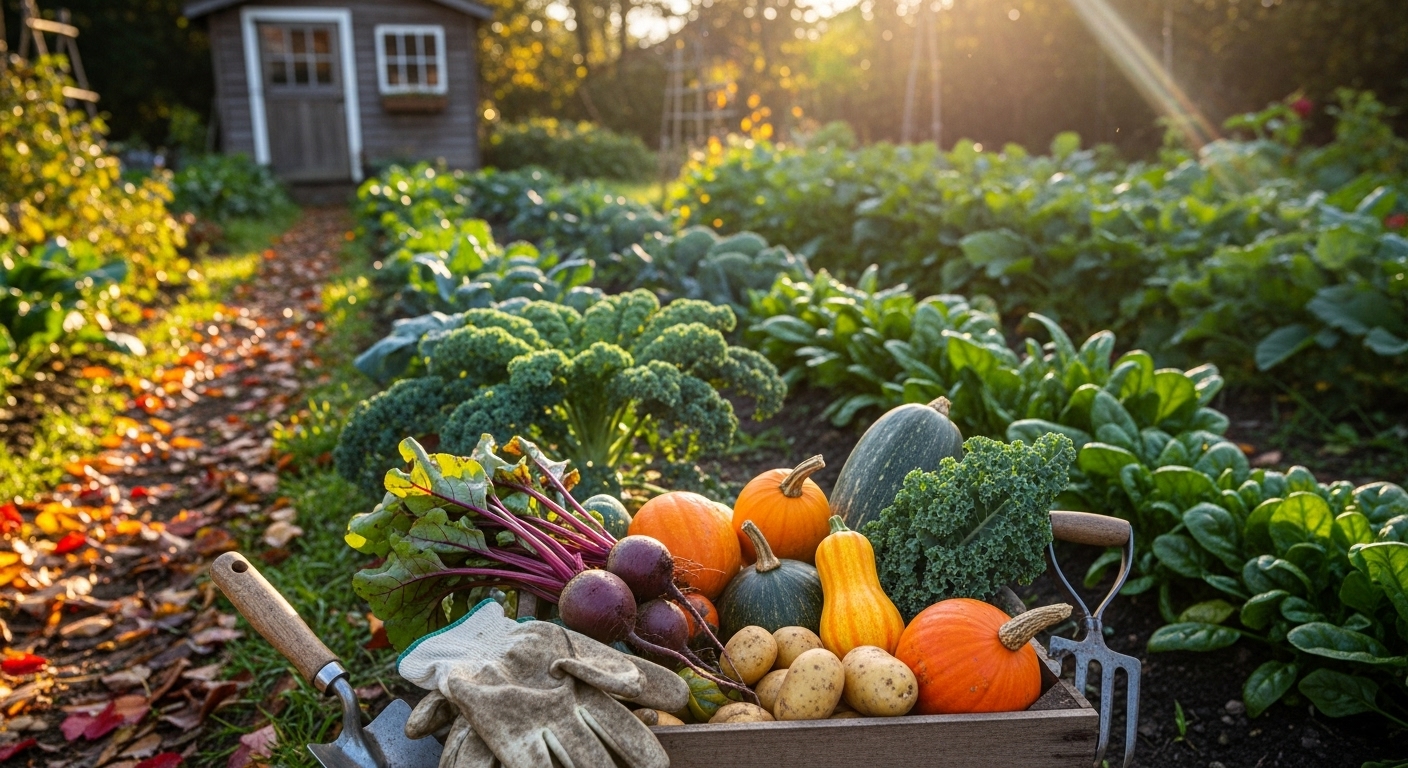
Expert Tips for Maximizing Your Autumn Harvest & Common Pitfalls to Avoid
To truly excel in your fall gardening endeavors, there are several expert tips to keep in mind, alongside recognizing common mistakes that can hinder your success. Implementing these insights will help you enjoy the fullest potential of your autumn garden.
Tip 1: Choose the Right Varieties. Not all varieties of a given vegetable are created equal in terms of cold hardiness or speed to maturity. Look for varieties specifically labeled as 'cool-season' or 'fall planting'. For example, certain kale or cabbage varieties are bred to withstand harsher frosts, and some spinach or lettuce types are less prone to bolting in lingering warmth. Researching and selecting appropriate cultivars makes a significant difference in your success.
Tip 2: Utilize Microclimates. Every garden has warmer and cooler spots. Pay attention to areas that receive more sun or are sheltered from prevailing winds. Planting more sensitive fall crops in these warmer microclimates can extend their growing season by several weeks. South-facing walls or fences can radiate heat, providing extra warmth for tender plants when temperatures drop.
Tip 3: Harvest Strategically. Many fall crops, particularly leafy greens like spinach, lettuce, and kale, are 'cut-and-come-again'. Instead of pulling the whole plant, harvest the outer leaves, allowing the inner leaves to continue growing. This method prolongs your harvest and maximizes yield from each plant. For root crops, don't be afraid to pull some 'baby' vegetables for early enjoyment, thinning your rows in the process.
Tip 4: Don't Forget Soil Testing. If you haven't done so in a while, a fall soil test can provide valuable insights into nutrient deficiencies or pH imbalances. This knowledge allows you to amend the soil effectively, preparing it not just for your current fall crops but also for the following spring. Healthy soil is the foundation of a productive garden.
Tip 5: Consider Raised Beds. Raised beds offer excellent drainage and can warm up slightly faster than in-ground beds, which can be an advantage in cooler fall conditions. They also provide easier access for planting and harvesting, reducing strain and making gardening more enjoyable.
Common Pitfalls to Avoid:
- Planting too late: This is the most common mistake. If you miss your planting window, your crops simply won't have enough time to mature before a hard freeze. Always aim to plant well in advance of your first frost date, considering the 'days to maturity' for each crop.
- Inadequate watering: While fall temperatures are cooler, plants still need consistent moisture, especially during germination and early growth. Don't assume rain will be enough; check soil moisture regularly.
- Ignoring pest issues: While fewer than in summer, pests can still emerge. Slugs, snails, and some late-season caterpillars can cause significant damage. Regular inspection is key to early intervention.
- Neglecting soil health: Continual planting without replenishing nutrients can deplete your soil. Always amend with compost or organic matter, even for a fall planting. Poor soil health leads to weak plants more susceptible to problems.
- Forgetting frost protection: Even hardy crops have their limits. A sudden, unexpected hard freeze can wipe out your efforts. Have row covers, blankets, or cloches ready to deploy at the first sign of severely cold weather to protect your investment. Being proactive with protection can save your entire harvest from an early end.
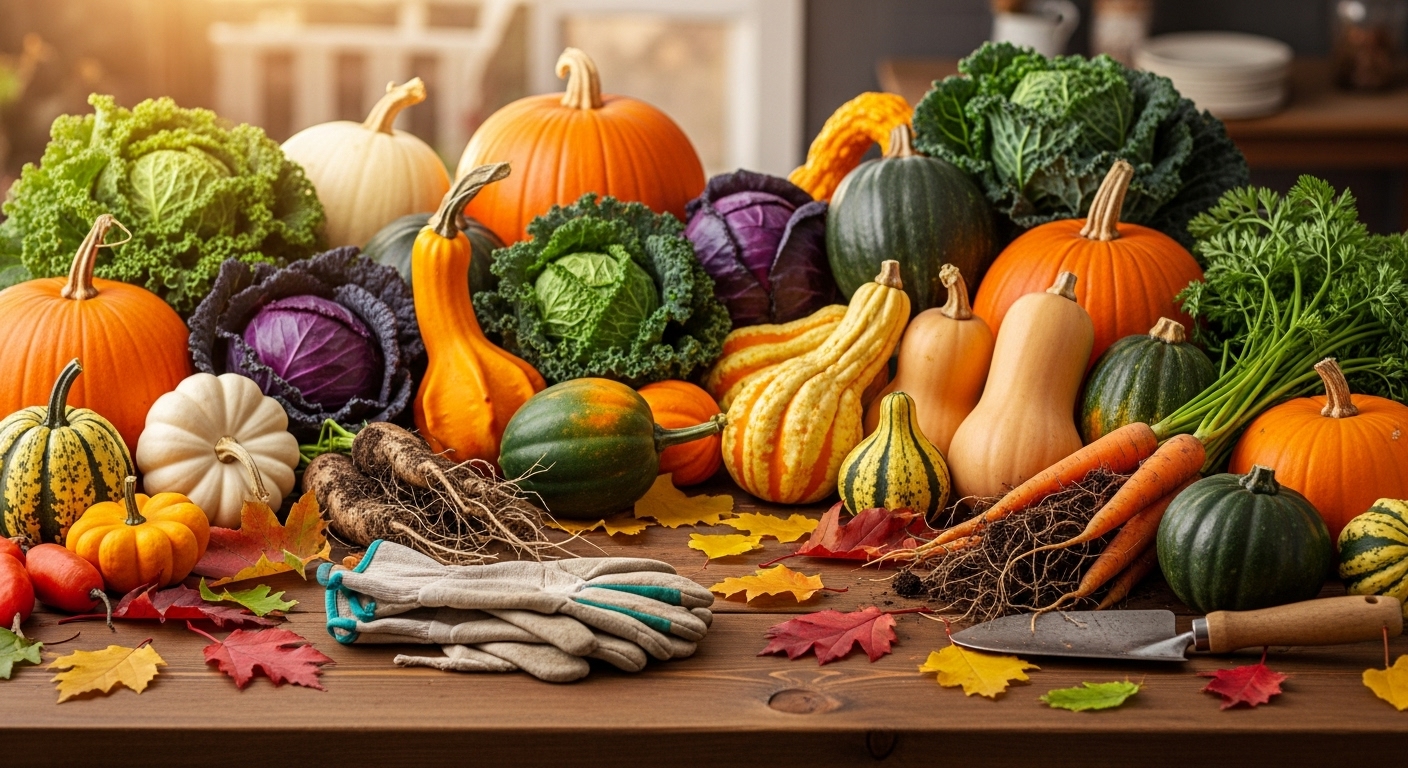
Conclusion
Embracing fall gardening opens up a wonderful world of possibilities, allowing you to extend your harvest and enjoy fresh, homegrown vegetables long after summer has passed. From the sweet crunch of autumn carrots to the crisp leaves of frost-kissed kale, the cooler months offer a unique opportunity for flavorful and abundant yields. By understanding the best cool-season crops, preparing your garden, and applying essential techniques, you can transform your outdoor space into a productive haven. Don't let the shorter days deter you; instead, see them as an invitation to discover the quiet joys and rich rewards of a thriving fall vegetable garden. Start planning today, and savor the delicious bounty that autumn has to offer!
